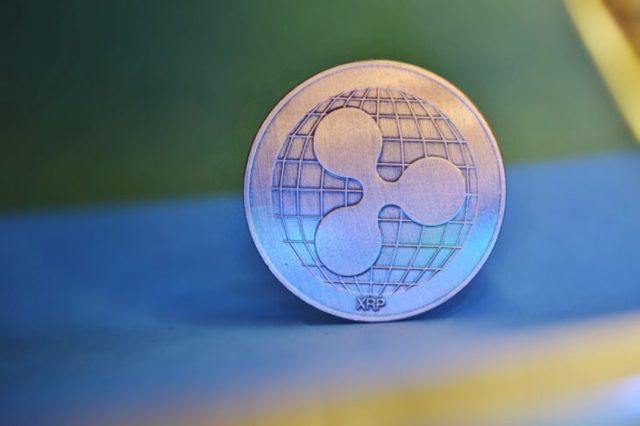- The price of WTI oil falls to around $71 on Monday morning.
- Saudi Arabia is offering discounts around the world on its crude oil.
- The DXY Dollar Index remains above 102.00 as traders await US inflation figures later this week.
Oil prices fell to around $71 on Monday morning, after prices tried and failed to break above $74 last week. This morning's news from Saudi Arabia is putting downward pressure on prices, with state-owned Aramco Oil Company offering discounts in several regions, with deeper discounts to Asia for its oil deliveries. Markets are pricing in these price cuts, although this could be positive for oil prices in the long term as cheaper supply could increase demand. In India, for example, a further increase in oil demand is already being reported due to the country's strong economic performance.
Meanwhile, the US dollar is recovering some of the losses it suffered in late December. The recovery is due to the latest US employment report, which points to a still buoyant labor market, although figures from the Institute for Supply Management pointed to a sharp slowdown. The dollar is now torn between safe haven monetary flows in the face of growing tensions in the Middle East and the Red Sea, while the other side is betting on rapid rate cuts by the Fed to avoid a recession. With this week's US Consumer Price Index (CPI) numbers, traders could take comfort in whether rate cuts could be around the corner or not.
The price of crude oil (WTI) is trading at $71.76 per barrel, and Brent at $76.67 per barrel at the time of writing.
Oil and markets news: Aramco maintains oil sales
- Saudi Arabia, leader of OPEC+, offers Asia and other regions substantial reductions in their official oil prices. For Asia specifically, prices are reduced to the lowest level since 2021.
- In a spillover effect, oil-related stocks slide lower, with the oil sector stock index falling 2%, the most since December 4. Shell fell as much as 2.5%, becoming the biggest loser on the Stoxx 600 index.
- India is experiencing a sharp rise in demand for petroleum products, with the economy booming at a record pace. Diesel consumption increases by 5% compared to last year.
- Rumors in OPEC+ point to new departures from some countries in the bloc. Countries such as Gabon, Equatorial Guinea and Congo are said to be re-evaluating their participation.
Technical Analysis of the oil price: One step back, two forward
Oil prices are falling this Monday as Saudi Arabia is offering widespread discounts. Although the initial movement in oil prices, which is downward, is conceded, in the medium term it could turn out to be quite the opposite. With nations such as India and other emerging markets reconfirming a boom in economic activity, demand is set to expand, while frost in Europe could mean ample demand also comes back online in the oil market.
To the upside, $74 continues to maintain its importance, although the level has become very choppy. Once surpassed, $80 comes into play. Still some way off, $84 is the next level to watch on the upside, once oil prices see a few daily closes above the $80 level.
Below $74, the $67 level could be the next support as it lines up with a June triple bottom. If the triple bottom is broken, the new low for 2023 could be nearby at $64.35, the low of May and March, as the last line of defense. Although it is still quite far away, it is worth mentioning $57.45 as the next level to watch if prices fall sharply.
WTI Crude Oil: Daily Chart
WTI Oil FAQ
What is WTI oil?
WTI oil is a type of crude oil that is sold in international markets. WTI stands for West Texas Intermediate, one of the three main types that include Brent and Dubai crude. WTI is also known as “light” and “sweet” for its relatively low gravity and sulfur content, respectively. It is considered a high-quality oil that is easily refined. It is sourced in the United States and distributed through the Cushing facility, considered “the pipeline junction of the world.” It is a benchmark for the oil market and the price of WTI is frequently quoted in the media.
What factors determine the price of WTI oil?
Like all assets, supply and demand are the main factors that determine the price of WTI oil. As such, global growth can be a driver of increased demand and vice versa in the case of weak global growth. Political instability, wars and sanctions can alter supply and impact prices. The decisions of OPEC, a group of large oil-producing countries, is another key price factor. The value of the US Dollar influences the price of WTI crude oil, as oil is primarily traded in US dollars, so a weaker Dollar can make oil more affordable and vice versa.
How do inventories influence the price of WTI oil?
Weekly oil inventory reports published by the American Petroleum Institute (API) and the Energy Information Agency (EIA) influence the price of WTI oil. Changes in inventories reflect the fluctuation of supply and demand. If the data shows a decline in inventories, it may indicate an increase in demand, which would drive up the price of oil. An increase in inventories can reflect an increase in supply, which drives down prices. The API report is published every Tuesday and the EIA report the next day. Their results are usually similar, with a difference of 1% between them 75% of the time. EIA data is considered more reliable since it is a government agency.
How does OPEC influence the price of WTI oil?
OPEC (Organization of the Petroleum Exporting Countries) is a group of 13 oil-producing nations that collectively decide member countries' production quotas at biannual meetings. Their decisions often influence WTI oil prices. When OPEC decides to reduce quotas, it can restrict supply and drive up oil prices. When OPEC increases production, the opposite effect occurs. OPEC+ is an expanded group that includes ten other non-OPEC member countries, including Russia.
Source: Fx Street
I am Joshua Winder, a senior-level journalist and editor at World Stock Market. I specialize in covering news related to the stock market and economic trends. With more than 8 years of experience in this field, I have become an expert in financial reporting.








